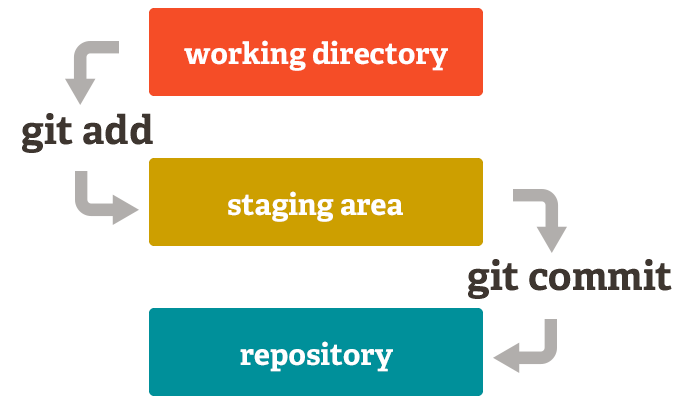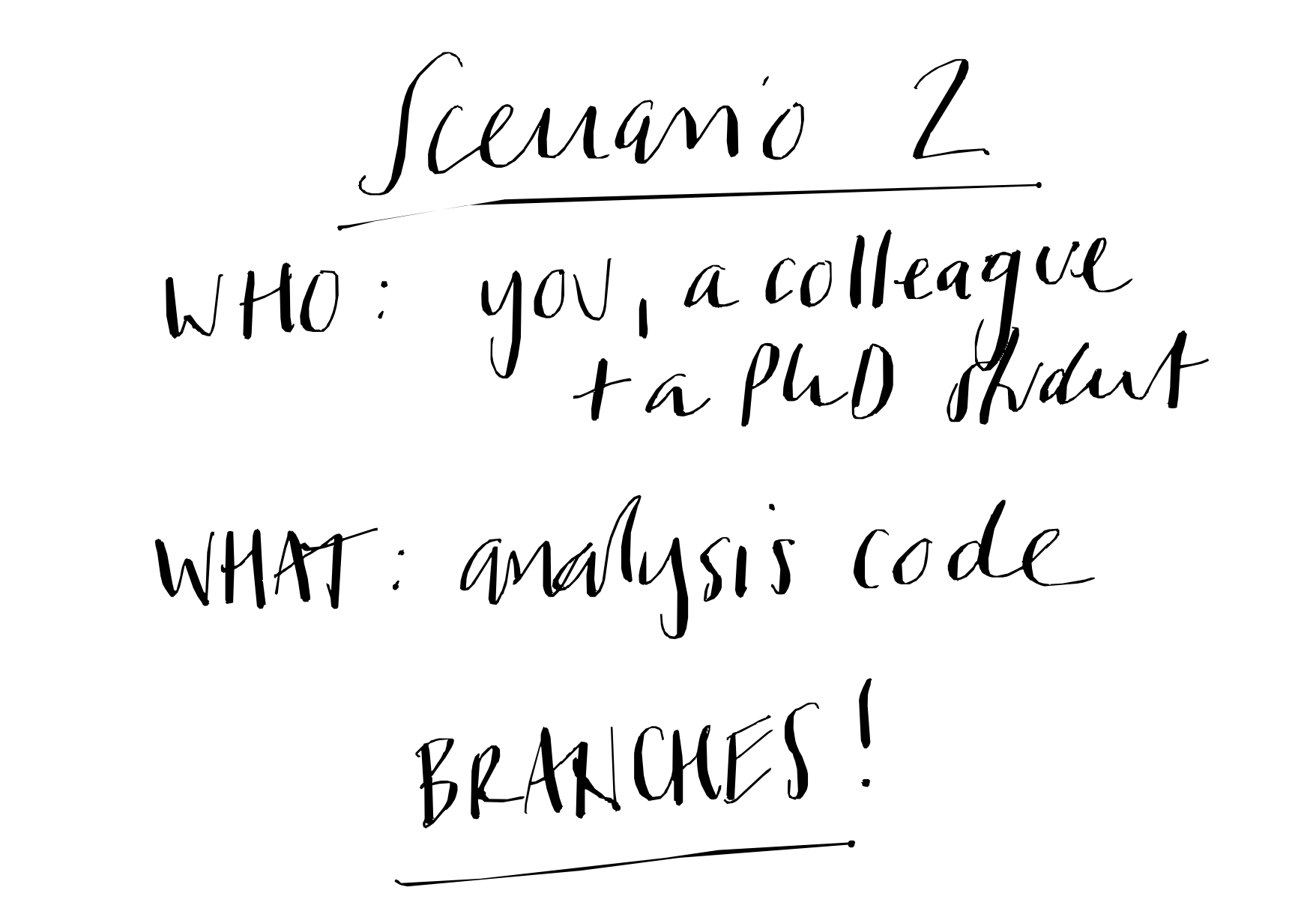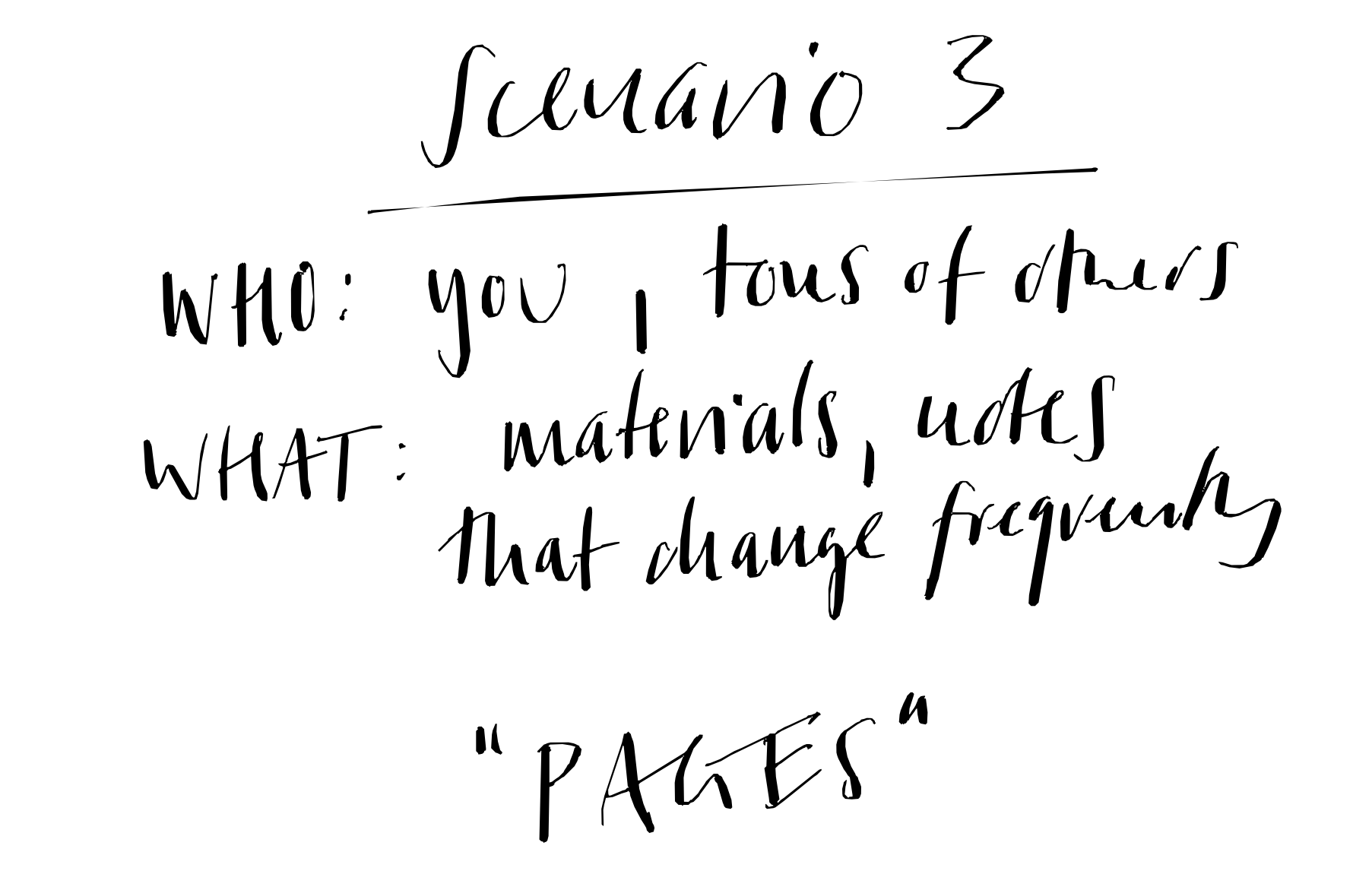ng-data-club
Version control with git
Denis Schluppeck, 2025-01-14

Why version control? (tout seul)
Lots of good reasons - but the main ones1 are:
- a complete history of changes (which means you can undo)
- branches (you can try new stuff out without breaking things)
- you can trace who did what when, tag versions of your manuscript / code
- submitted, published
- v1.0, feature-release
1 see e.g. “What is version control”
Why version control? (avec amis)
If you are collaborating on code / docs, in addition:
- you can trace who did what and when
- you can resolve conflicts (eg two potential fixes to same problem)
+ github.com
- if you use github.com lots of additional features
- discussions, issues, actions, pages …
Imagine a typical project (code / notes)

Why git?
There are many version control systems (VCS). But git comes with some advantages:
- it’s distributed (full version history in your local copy)
- corollary: you can work with it anywhere :airplane: or :train: (no need for network connection)
- it’s widely used1
1 see e.g. “Wikipedia / git”
git does snapshots
- think of this as snapshots
- what’s the state of each file now?

How are things tagged?

How are things tagged?
- each file has a unique fingerprint (
shasum) - if the file changes, the fingerprint changes, too!
sha= secure hash algorithmshaturns text/data into a 40 digit hexadecimal number
hexadecimal numbers?
0...9 10 11 12 13 14 15 # decimal 0...9 a b c d e f # hexadecimal 0 1 10 11 100 101 ... 111 # binary
shasum of a file
shasum Introduction.md
# b5acbb35abd2511a4c05e48ef58f8990f139793a Introduction.md
tiny change, e.g. add a space?! and calculate SHA again:
shasum Introduction.md
# 502bbcb5ab4f0d8127396675dd7d17d7d8b55b0a Introduction.md
… completely different.
git nitty-gritty – for data club 😀
the sha actually refers to the
"blob + <size in bytes> + \0 + <the file contents>"
you can try this out by
echo 'Hello, World!' | git hash-object --stdin
# leads to
8ab686eafeb1f44702738c8b0f24f2567c36da6d
Note: the filename doesn’t contribute to the sha of the file / blob … which means renaming files is cheap (doesn’t use up space)
How are things tagged (2)?
A similar trick works for a list of directory contents (the “tree”)
:arrow_right: tree hash
.
├── analysis
├── stimulusCode
│ └── stims
│ ├── houses
│ ├── normal
│ ├── objects
│ └── scrambled
└── unix-intro
How are things tagged (3)? - commit
- information about files (aka blobs), their relationship to each other (the tree), the previous state (parent) and a message make up a
commit
$ git cat-file -p HEAD
tree 80fc45cae348efbdbbb652642cf4c22e1ddaaf80
parent b2b3a018fa2569bc5aa54b0b744145f6758bcba7
author Denis Schluppeck <denis.schluppeck@gmail.com> 1517238320 +0000
committer Denis Schluppeck <denis.schluppeck@gmail.com> 1517238320 +0000
fixes http to https
</small>
Workflow

3 scenarios to get us all thinking
-
you (on your own), several different computers
-
you, a couple of collaborators,+ code that changes a lot
-
you want to share materials with lots of people (details change: maybe once a year, maybe more often…)

-
new idea / analysis: worth creating a new repo (private??)
-
on laptop: work on code,
git add,git commit,git push -
on desktop:
git clone, use code (but if you find a bug while running on lab machine …
fix and push back to repo)
</small>

Branches - trying out new ideas
- colleague and phd student: want to try some new approach that might break things…
# they should make a new TRACKING BRANCH
git checkout -b whacky-idea-branch
# work on there, git add / commit / push...
git checkout main
git merge whacky-idea branch # when ready ;)
</small>

Pages - sharing via static www hosting
- work on
markdown(which gets converted to HTML viajekyll) - or use HTML / javascript / anything that is client/browser only (“static”) should work </small>
Examples
- NG data club website is hosted this way: https://schluppeck.github.io/ng-data-club/
-
r in browser
Local repo: Let’s try it
- make a directory,
cdinto it - initialize repo
mkdir test && cd test
git init
- make a text file
test.txt - write something into it and save it
Let’s try it (2)
- add to staging area
- … and try to commit with a message (
-m)
git add test.txt
git commit -m 'my first commit'
Warnings?
- you’ll see some warning messages
- for (only this first time), set up your
user.nameanduser.email
git config --global user.name "First Last" # your name
git config --global user.email "me@gmail.com" # your email
- This info is stored on your machine in a little file, which you can inspect )e.g. on
macos
more ~/.gitconfig
Now complete the commit
git status # read what's there
git commit -m 'my first commit'
git status # read what's there NOW
If you want this on github
Currently the repository is local to the machine you are working on, if you want to share with your friends and colleagues on github.com, follow instructions at:
https://help.github.com/en/articles/adding-an-existing-project-to-github-using-the-command-line
Notes
-
Illustrations linked from https://git-scm.com/book/en/v2/ - Creative Commons license CC BY-NC-SA 3.0
-
Details on
shasum(available as a UNIX command):man shasum # or info shasum